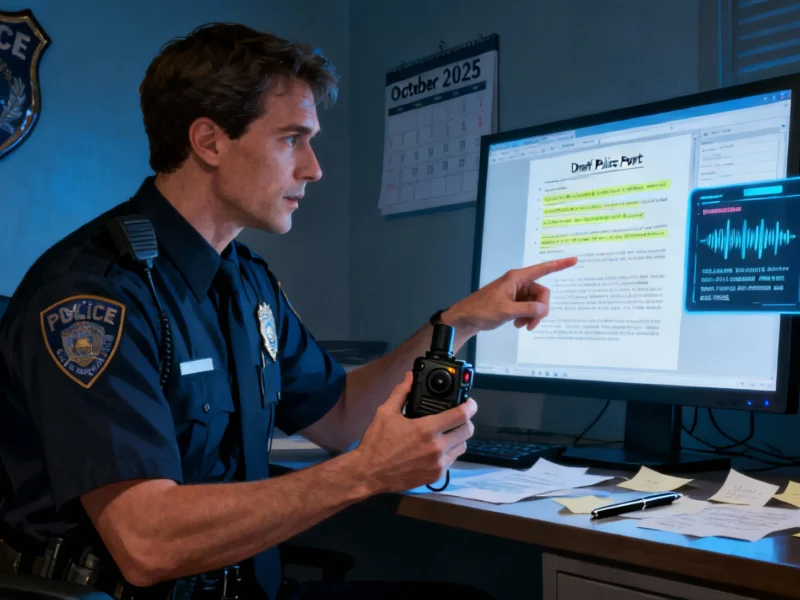AI Report Writing Gains Traction in Policing
Police departments across the United States are increasingly turning to artificial intelligence systems to automate the creation of police reports from body camera footage, according to industry reports. The technology uses large language models to transform audio transcripts into formal documentation within minutes, potentially saving officers significant administrative time while promising more comprehensive reports.
California Mandates AI Transparency in Police Documentation
California became the second state after Utah to require transparency when AI assists in police report writing, with Governor Gavin Newsom signing SB 524 into law on October 10. The legislation mandates that all AI-assisted police reports be clearly marked as such and requires law enforcement agencies to maintain audit trails identifying both the officer using the AI system and the source materials. The law also prohibits AI-generated drafts from constituting an officer’s official statement.
Analysts suggest this legislation represents a significant milestone in regulating artificial intelligence within criminal justice systems, acknowledging both the technology’s potential benefits and substantial risks. The law requires agencies to retain the first AI-generated draft for as long as the official report is maintained, creating a paper trail for potential legal challenges.
Implementation Challenges and Compliance Issues
Despite transparency recommendations from leading police technology companies, investigative reports indicate inconsistent implementation. According to industry analysis, some police departments in Lafayette, Indiana and Fort Collins, Colorado were intentionally disabling transparency features on AI report generators.
Sources familiar with Axon’s Draft One system indicate that some police chiefs couldn’t distinguish between AI-generated and officer-written reports because personnel were copying AI-generated content into reports they claimed to have authored themselves. This practice effectively bypassed both AI disclaimers and audit trails, according to digital rights advocates.
Legal and Technical Concerns Multiply
Legal experts raise multiple concerns about AI-generated police reports, noting that these documents can determine individuals’ liberty in court proceedings. Technological questions center on how the underlying algorithms were trained and whether biases from historical police reports might be perpetuated.
Transcription accuracy presents another significant challenge, as police interactions often occur in chaotic, emotionally charged environments with multiple languages and background noise. Legal analysts suggest these factors could lead to errors, omissions, or “hallucinations” in AI-generated content that might compromise case integrity.
Trial procedure questions are also emerging, including how defense attorneys should cross-examine AI-generated documents and whether audit logs must be preserved for expert analysis or provided to the defense. These concerns are particularly relevant given that court precedents establish defendants’ rights to confront evidence against them.
Systemic Risks in Plea-Heavy Justice System
The widespread adoption of AI report writing raises particular concerns in a criminal justice system where over 95% of cases are resolved through plea bargaining, according to legal analysts. In misdemeanor cases especially, the police report often forms the basis for charging decisions, pretrial detention, plea negotiations, and sentencing without thorough judicial scrutiny.
Industry documentation from Axon’s settings guide recommends transparency disclaimers, but these are not universally implemented. Some jurisdictions are taking precautionary measures, with prosecutors in Seattle-area jurisdictions reportedly advising against AI use in police reports due to evidentiary concerns.
Future Regulation and Oversight Needed
Legal experts suggest that transparency requirements represent only the first step in regulating AI police reporting. Comprehensive assessment by courts, legal experts, and defense attorneys will be necessary to address the technology’s risks, according to criminal justice advocates.
As more states consider following California and Utah’s regulatory approach, analysts suggest that police departments must embrace not just transparency but also justice-oriented practices. The emerging consensus indicates that without proper safeguards, AI-generated police reports could undermine constitutional protections while appearing to streamline law enforcement administration.
This article aggregates information from publicly available sources. All trademarks and copyrights belong to their respective owners.



